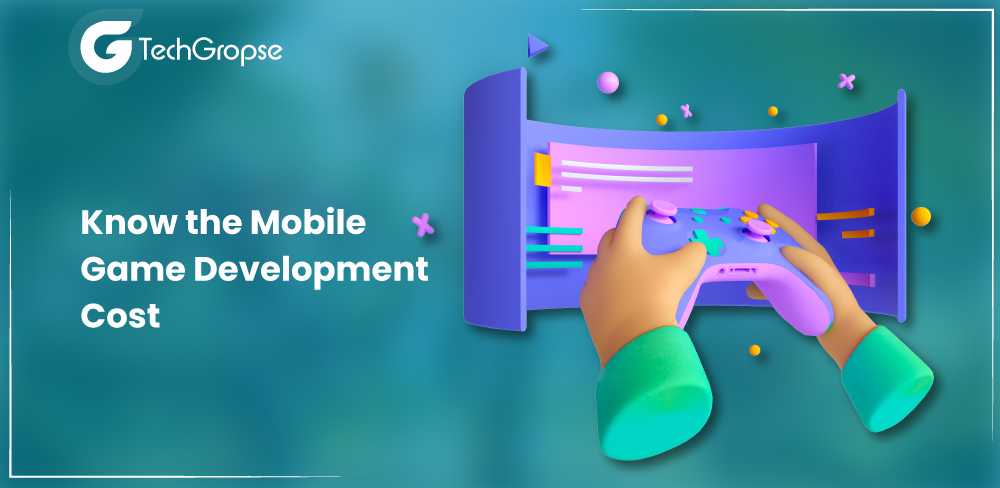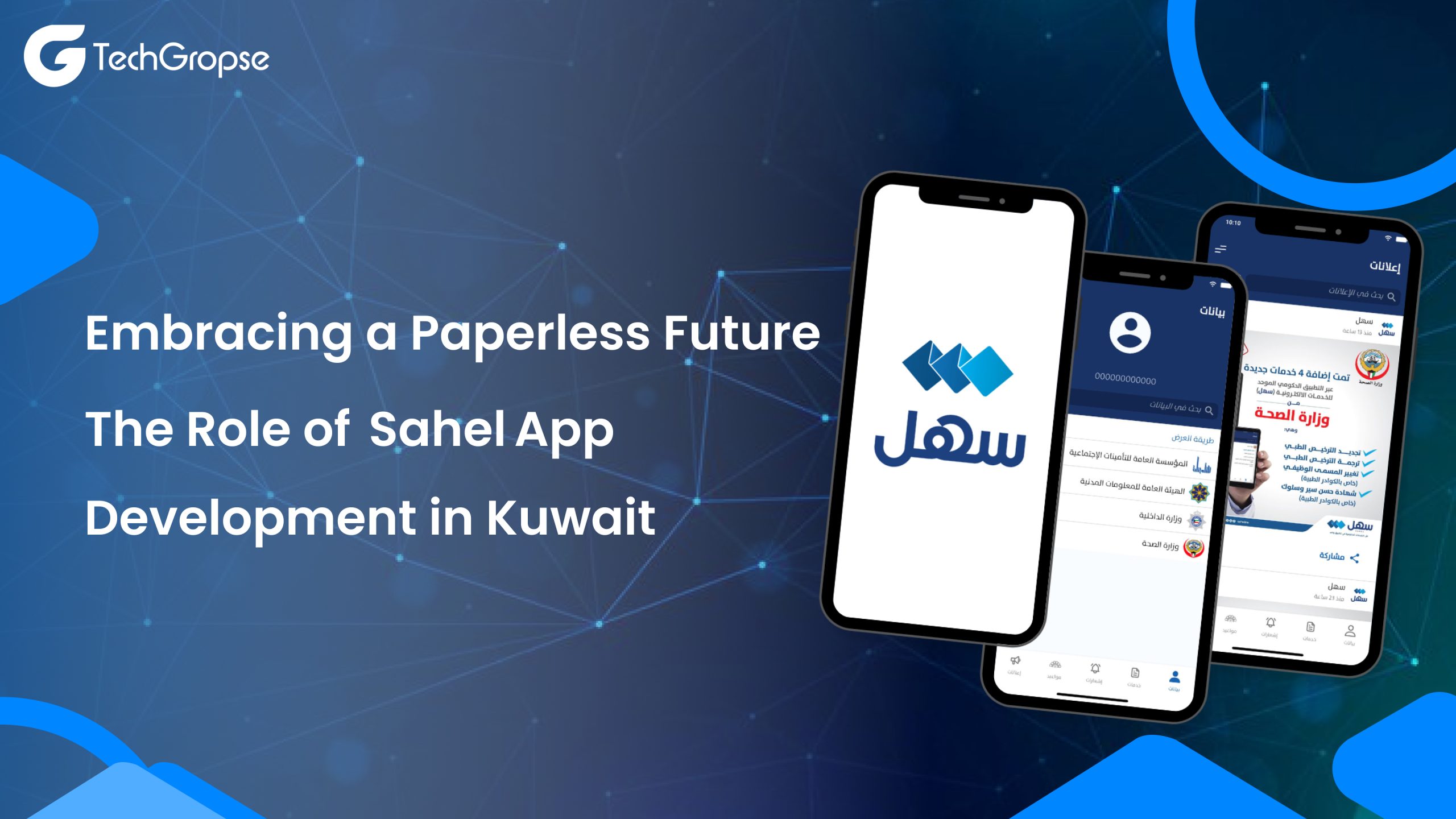| Quick snapshot:
Mobile game development is the process of creating games specifically designed for smartphones and tablets. It involves concept ideation, design, coding, testing, deployment, and mobile game development cost. Developers choose between native development (using platform-specific languages like Swift for iOS or Java/Kotlin for Android) or cross-platform tools like Unity or Unreal Engine. The mobile gaming market’s rapid growth has led to a diverse range of game genres, including puzzles, simulations, RPGs, and casual games. Monetization strategies typically encompass in-app purchases, ads, or premium versions. |
Did you just think of an awesome idea for a mobile game? That’s so cool! Now, you are probably wondering how much does it cost to develop a mobile game a reality. Well, there are a bunch of things to think about when it comes to figuring out the cost of developing a mobile game.
Mobile game development cost refers to the expenses incurred during the process of creating and designing a game specifically for mobile devices.
It includes various factors such as
- Planning
- Designing
- Programming
- Testing & Quality Assurance
- Post Production Cost
Knowing the cost involved is essential for both developers and businesses to have a clear understanding of the financial aspects associated with game development.
According to Statista’s report by 2027, there will be a whopping 182.0 million people playing mobile game apps all around the world. And get this, these game apps are gonna be super popular, with a 52.9% share of people using them.
It’s gonna be a total game frenzy!
In this post, we want to share some important factors with you. We have got a lot of mobile app development company that helps make games, so we know what we are talking about.
Let’s dive in and learn more!
Mobile Gaming App Development Market Snapshot
- There are nearly 203 million people in the US who play games on their smartphones.
- Mobile gaming is popular and makes up more than half of all the money made in the global games industry.
- It is crazy to think that more than 72% of people who have a smartphone in the US play games on it.
- Experts predict that by the year 2030, the mobile game market will be worth a whopping USD 284.4 billion.
| Aspect | Statistics |
| Market Size | The global mobile gaming market was esteemed at about $77 billion in 2020 and is projected to continue growing. |
| User Base | There were more than 2.5 billion mobile gamers worldwide, with a powerful portion in Asia-Pacific areas. |
| Revenue Generation | Mobile gaming accounted for around 50% of the gaming industry’s revenue, surpassing console and PC gaming. |
| Free-to-Play Dominance | Free-to-play games with in-app purchases drove gain, with popular titles earning substantial through microtransactions. |
| Top Grossing Games | “Clash of Clans”, “Pokémon GO,” “Candy Crush Saga,” and “Honor of Kings” consistently ranked as the highest-grossing mobile games. |
| Esports and Competitions | Esports tournaments for mobile games like “Call of Duty: Mobile,” “PUBG Mobile,” and “Arena of Valor” achieved traction with significant prize pools and viewer engagement. |
| App Store Distribution | Google Play Store and Apple App Store were the prior platforms for downloading mobile games, with Play Store overwhelming because of its wider Android user base. |
| Indie Success Stories | Independent game developers gained success by making creative, accessible mobile games. |
| Advertising Revenue | Advertising revenue alongside in-app purchases played a significant role, like interstitial ads and rewards. |
| User Engagement | Successful mobile games focused on continuous engagement through events, regular updates, and community interaction. |
| Localization Efforts | Games were localized into multiple languages and customized for different regions to enhance global appeal. |
| The Emergence of Cloud Gaming | Cloud gaming services like NVIDIA GeForce Now and Google Stadia explored streaming high-quality games to devices. |
Importance of Knowing Mobile Game App Development Cost
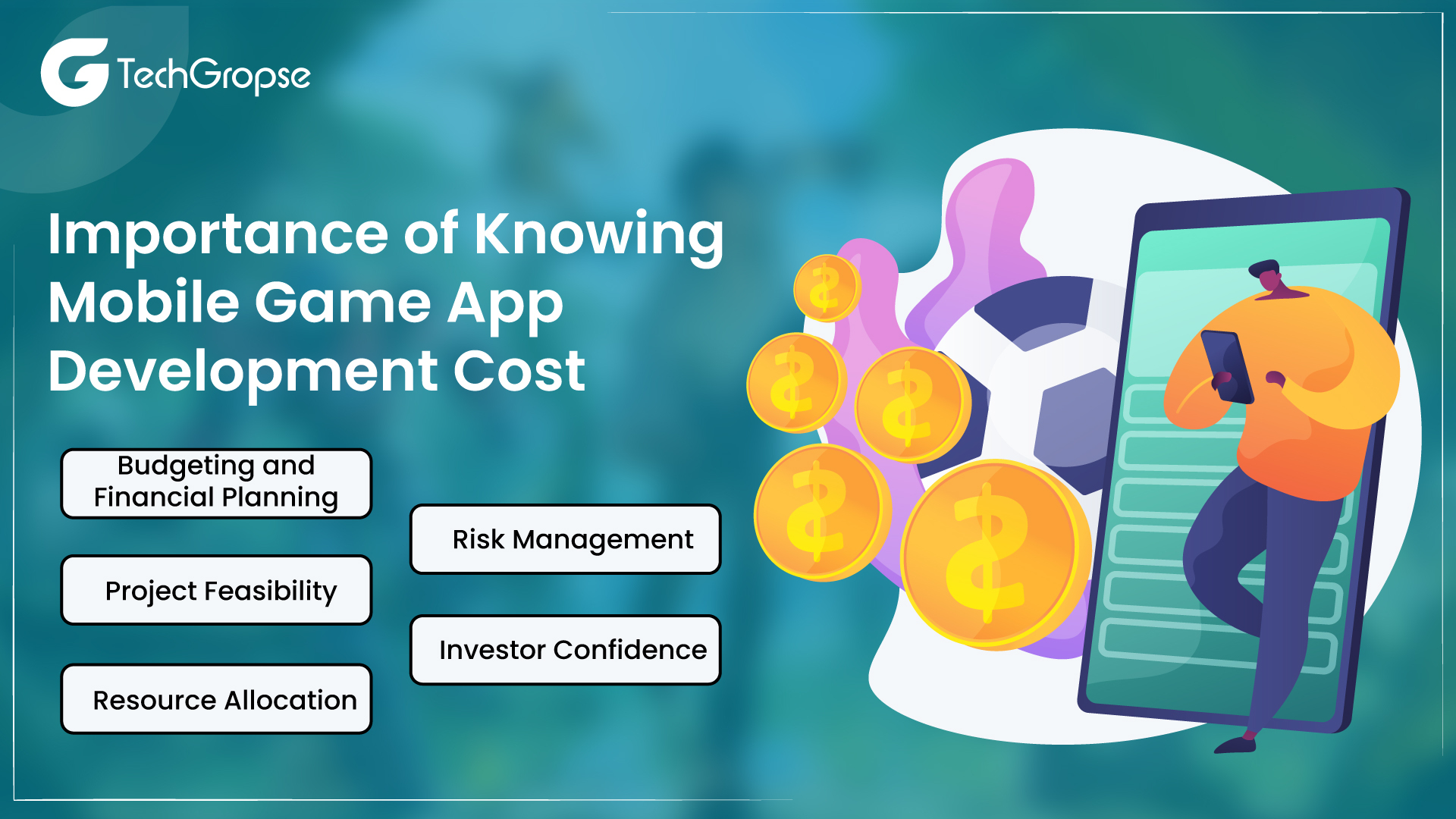
Understanding the cost of mobile game development is essential for different reasons, as it hire mobile app developers, investors, and stakeholders with valuable insights into the project’s feasibility, potential returns, and overall planning.
Here’s why knowing the mobile game development cost in India is important:
- Budgeting and Financial Planning: Valid knowledge of development costs allows for effective budgeting, ensuring that there are sufficient funds allocated for different stages of the development process, like design, coding, testing, marketing, and post-launch support.
- Project Feasibility: Knowing the cost helps define if the project is financially viable. It allows developers to assess whether the potential revenue from the game aligns with the expenses incurred during its development, marketing, and ongoing maintenance.
- Resource Allocation: Hire dedicated developers team that can allocate resources effectively by understanding where costs are concentrated, like art assets, programming, development tools, marketing, and other associated expenses.
- Risk Management: Understanding the potential costs allows better risk assessment. Developers can determine potential cost overruns, delays, or unexpected expenses and plan contingencies accordingly.
- Investor Confidence: For projects seeking investment or funding, a well-defined and accurate cost breakdown boosts investor confidence. It shows that the developers have a comprehensive understanding of the project’s financial aspects.
In essence, knowing the cost of mobile game development is a fundamental aspect of project planning that impacts decision-making, financial viability, resource allocation, risk management, and the overall success of the game in a competitive market.
Key Factors of Mobile Game Development Cost Breakdown
Mobile game development has seen tremendous growth in recent years, fueled by the ubiquity of smartphones and the increasing need for gaming among users.
However, one important aspect that often gets overlooked is the cost associated with developing a mobile game. Understanding the basics of mobile game development cost is essential for developers, businesses, and investors to plan and budget effectively.
- Monetization Strategy: The development cost influences the choice of monetization strategy, whether it is a premium game, in-app purchases, advertising, or a combination. This decision affects the game’s revenue potential and profitability.
- Scope and Features: Knowing the cost helps in defining the game’s features and scope. Hire dedicated developers can make informed decisions about which features are feasible within the budget and timeline, avoiding unnecessary complexity.
- Realistic Timeline: Cost estimation is closely linked to project timelines. Developers can align development phases with available resources, ensuring that deadlines are reasonable and attainable.
- Resource Management: Developers can hire android app developers, contractors, and external partners based on the project’s budget, ensuring that the required skills are available for successful development.
- Competitive Analysis: Understanding development costs allows for comparison with similar games in the market. This insight helps developers position their games appropriately in features, terms of quality, and pricing.
- Marketing and Distribution Strategy: The cost of marketing, user asset, and distribution on app stores is a significant aspect. Knowing the overall budget helps hire iPhone app developers plan compelling marketing campaigns and strategies for user engagement.
- Long-Term Sustainability: Accurate cost estimation contributes to the long-term sustainability of the game. It ensures that resources are allocated not just for development but also for maintenance, post-launch updates, and enhancement.
Mobile Game Development Cost Breakdown
| S.No. | Type of Mobile Game | Development Cost | Example |
| 1 | Mini-Game | 2k to 10k | Pac-Man, Flappy Bird, etc. |
| 2 | Simple 2D Game | 5k to 15k | Red Ball, Flappy Slendrina, etc. |
| 3 | Social Game App | 5k to 20k | Facebook Games, Farm Ville, etc. |
| 4 | Mid-Level Mobile Game | 10k to 50k | Candy Crush, Angrybirds, etc. |
| 5 | Business Mobile Game | 10k to 100k | Free 3D Shooting, Join Clash 3D, etc. |
| 6 | 3D Game | 50k to 500k | Last Day on Earth, Clash of Clans, etc. |
| 7 | AAA Game | 300k to 500k | GTA, PUBG, etc. |
| 8 | Real Money Game | 10k to 100k | MPL, Ludo Empire, etc. |
Top Factors Affecting Mobile Game Development Cost
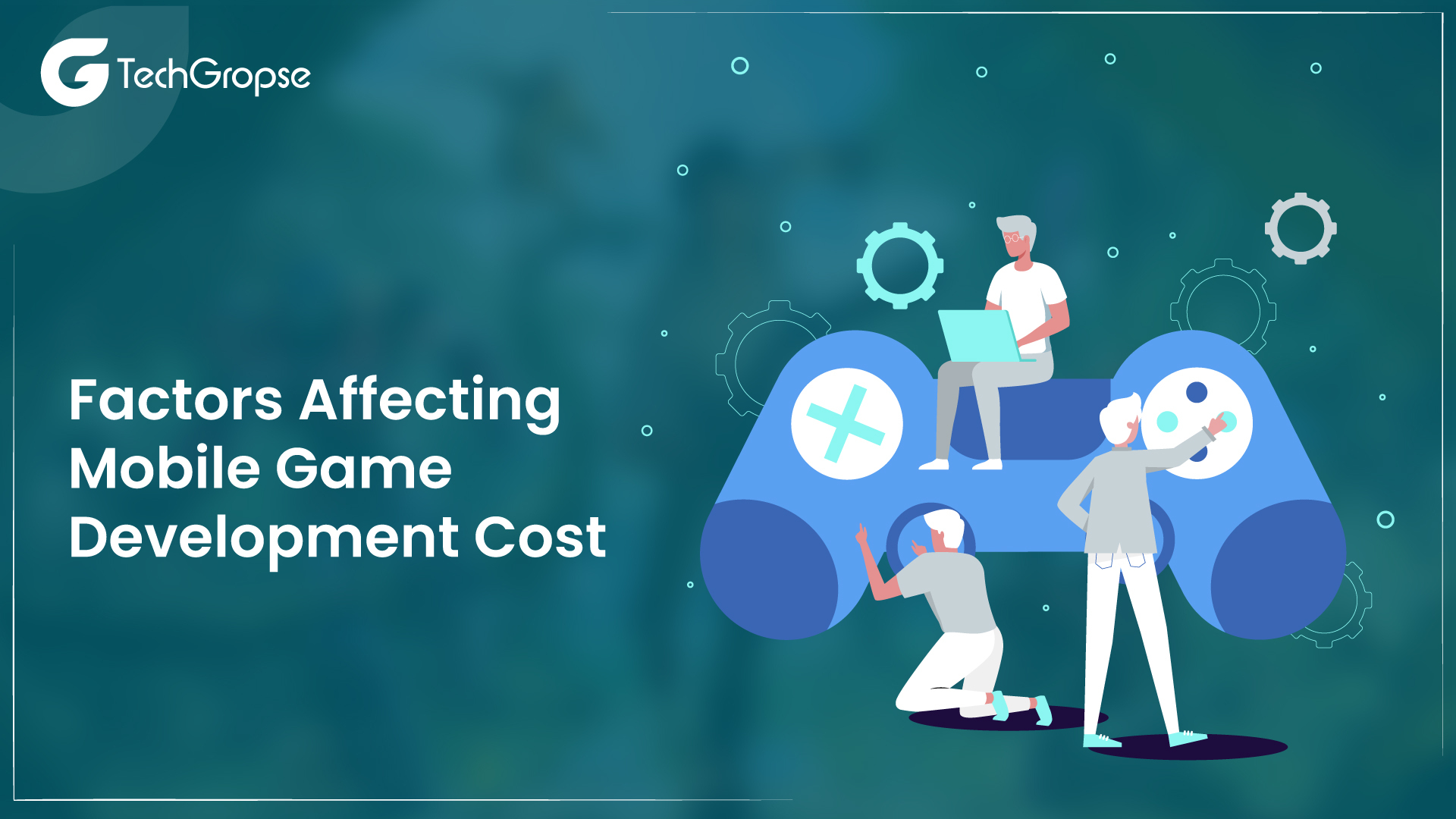
The cost of mobile game development can differ based on certain factors. Understanding these aspects is essential for estimating and planning the budget for your game project.
Here are the key factors that can influence the cost of mobile game development:
1. Complexity and Scope of the Game
The complexity and scope of a game have a substantial effect on its development cost. Games with advanced AI systems, complex gameplay mechanics, and expansive levels tend to need more resources and time, resulting in higher costs. On the other hand, simple games with straightforward gameplay mechanics and minimal levels can be developed at a lower cost.
2. Platform Selection: iOS, Android, or Both?
The choice of platforms on which the game will be available like Android, iOS, or both, also affects the entire development cost. Developing for numerous platforms needs additional resources and expertise, which can improve the overall expenses. Every platform has its own development tools and needs, making it necessary to consider platform selection during the cost analysis phase.
3. Graphics and Animation Requirements
The level of graphics and animation in a game directly impacts its development cost. Games with detailed 3D models, high-quality visuals, and complex animations generally need more time, effort, and skilled artists, resulting in higher costs. Simpler 2D graphics and animations, on the other hand, can be more cost-effective.
4. Game Mechanics and Functionality
The complexity and depth of the game mechanics and functionality also influence the development cost. Games that involve character upgrades, complicated gameplay elements, multiplayer features, or in-app purchases need more development time and resources, which can increase the overall cost.
5. Integration of Third-party APIs
The integration of third-party application programming interfaces affects the development cost. Utilizing APIs for features such as advertising, social media integration, analytics, or payment gateways may affect additional expenses, depending on the complexity of the integration and any associated license or usage fees.
6. Technology and Tools
The selection of a game engine (Unreal Engine, Unity), development tools, and third-party plugins can affect development cost and speed. Proprietary engines may need more time for customization and optimization.
7. Testing and Quality Assurance
Various testing, quality assurance, and bug fixing are essential for a successful game. Allocating sufficient time and resources for testing impacts the overall cost.
8. Team Size and Expertise
The size and expertise of your development team impact both development speed and cost. Highly skilled professionals may command higher salaries, but their expertise can lead to more efficient development.
Additional Factors Affect Mobile Game App Development Cost
Considering these factors and conducting thorough planning before starting the development process will help you develop a realistic budget and timeline for your mobile game project.
1. Gameplay Mechanics
Unique and creative gameplay mechanics could need additional testing and custom coding, potentially adding to the development time and cost.
2. Monetization Model
The chosen monetization strategy (premium, freemium, ad-supported) can impact the development process. Implementing ads, in-app purchases, or other revenue-generating mechanisms may need additional work.
3. Multiplayer and Networking
Implementing multiplayer features involves server infrastructure and complex networking code. It can raise development costs and complexity.
4. Localization
Translating the game into numerous languages and adapting it for various regions can add to development time and expenses.
5. Sound and Music
High-quality sound effects and music contribute to the game’s atmosphere but can also add to the costs if hire iPhone app developers and composers.
6. Project Management and Iteration
Regular updates, effective project management, and iterations based on user feedback are essential but need ongoing resources and time.
7. Legal and Licensing Costs
If using licensed content, music, or trademarks, there may be legal and licensing fees to consider.
8. Marketing and User Acquisition
Promoting the game via marketing campaigns and user acquisition strategies involves additional costs that contribute to the overall budget.
9. Post-Launch Support
Providing ongoing updates, bug fixes, and content expansions post-launch is an essential aspect that requires continued resources.
10. Regulatory Compliance
Compliance with age ratings, app store guidelines, and regional regulations might require additional efforts and resources.
11. Geographical Location
Development costs can differ based on the geographical location of your development team. Different regions have different average salary levels and cost of living.
12. Timeline and Deadlines
Rushed development timelines can raise costs because of the need for more resources and overtime work.
Mobile Game Development Engines/Tools
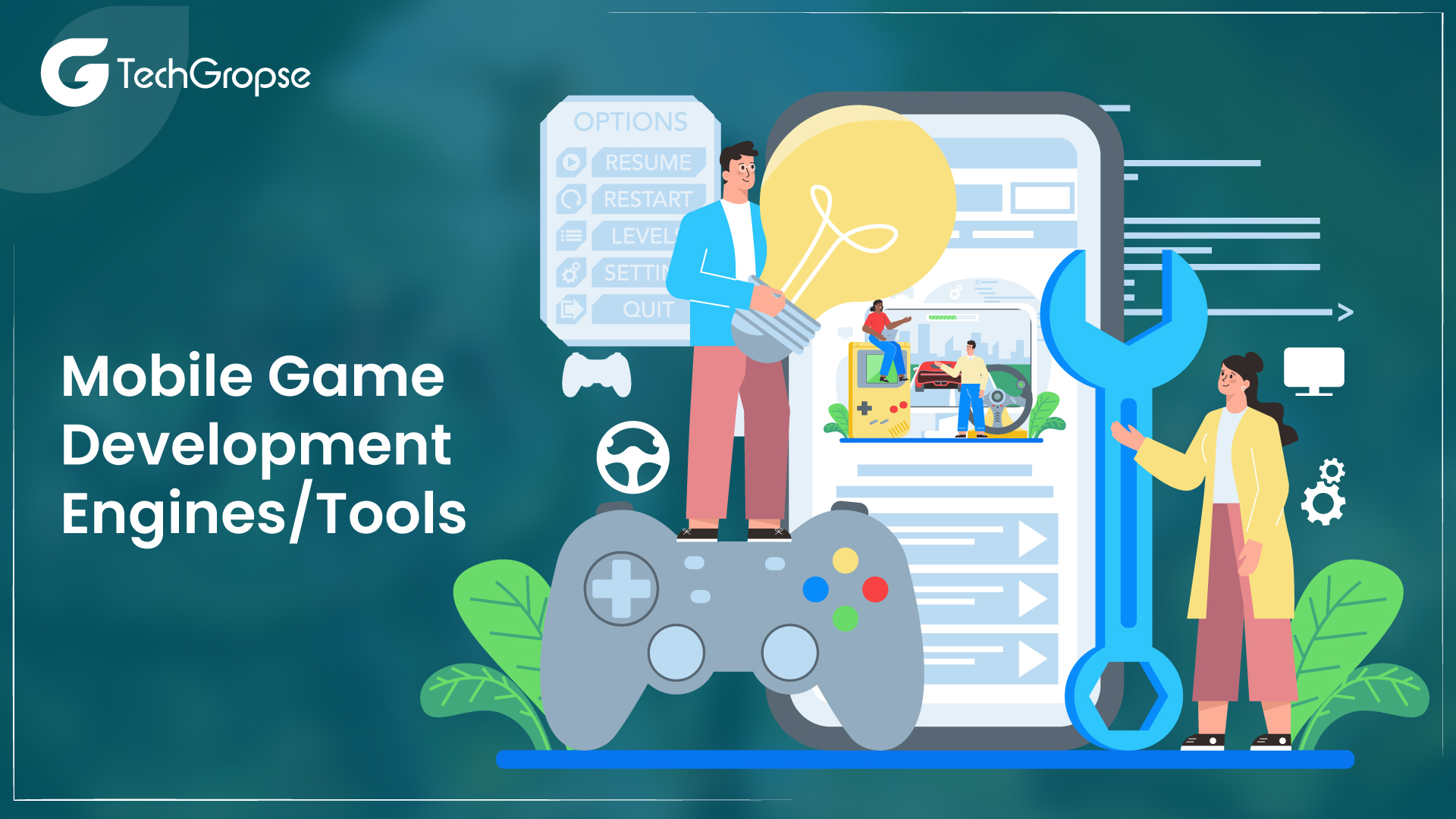
There are certain powerful and popular game development tools and engines available for developing mobile games. These tools provide different features and capabilities to streamline the development process, whether you are an indie developer or part of a larger team.
Here are some of the notable options:
1. Unity
Unity is one of the most widely used game engines for both 2D and 3D mobile game development. It supports numerous platforms, such as Android and iOS, and offers a user-friendly interface, a vast asset store, and a strong community. Its versatile scripting language, C#, allows for flexible development.
| Supported Platforms | Popular Games Developed | Unity Subscription Plans |
| Android | Pokemon Go | ● Students/Beginners: Free
● Plus Edition: $40/Month ● Pro-Edition: $150/Month ● Enterprise Edition: $200/Month |
| iOS | Lara Croft Go | |
| Windows Phone | Angry Birds 2 | |
| Fire OS | … | |
| Tizen OS | … | |
| … |
2. Unreal Engine
It is well known for its incredible graphical capabilities and is suitable for high-quality 3D mobile game app development. While it could require a steeper learning curve compared to Unity, it offers powerful rendering, advanced features, and a visual scripting system called Blueprints.
| Supported Platforms | Popular Games Developed | Unreal Engine Subscription Plan |
| Android | Lineage II: Revolution | ● For Beginners and startups: Free
● Business with gross revenue $1,000,000 or more: 5% royalty |
| iOS | ABC Augmented Reality | |
| Linux | Heart at Attack | |
| Windows PC | … | |
| Mac OS X | … | |
| SteamOS | … | |
| VR platforms | … | |
| Sony PlayStation 4 | … | |
| Xbox One | … | |
| HTML5 | … |
3. Cocos2d
Cocos2d is a famous open-source framework for 2D game development. It has different versions, like Cocos2d-JS (JavaScript) and Cocos2d-x (C++). It is known for its efficiency in creating 2D games and is used by many mobile game developers.
| Supported Platforms | Popular Games Developed | Cocos2d-X Subscription Plan |
| Android | Clash of Kings | Available free to use |
| iOS | Brave Frontier | |
| HTML5 | Angry Birds Fight | |
| Windows | … | |
| Mac | … |
4. Titanium
Titanium is like a superstar in the world of making mobile games. It is one of the best tools that game developers use to create awesome games for devices and tablets. You don’t have to worry about using various tools or languages for various devices, because Titanium lets you make one code that works on lots of different phones.
It’s like having a magic wand that makes game-making super fast and fun. Additionally, Titanium has over 5000 special features called APIs that make game development even easier.
| Supported Platforms | Popular Games Developed | Titanium Subscription Plans |
| Android | Crash Trilogy | ● Indie Version (Basic): Free
● Pro Version: $199/month ● Enterprise Version: Custom pricing |
| iOS | Prototype 1 & 2 | |
| HTML5 | … | |
| Hybrid | … |
Conclusion: Insights and Tips for Managing Mobile Game Development Costs
Developing a mobile game is thrilling and rewarding work, but it also comes with its fair share of costs. By understanding and managing these costs effectively, you can make the most out of your development budget.
Remember to plan ahead, allocate resources wisely, and prioritize quality assurance to provide a top-notch gaming experience. Don’t forget to market your game effectively, engage with your players, and constantly update and enhance your game to stay ahead of the competition.
Ultimately, creating a successful mobile game is a delicate balance of creativity, technical expertise, and business insight– so go forth, create great games, and have a blast!
FAQ: Know the Mobile Game Development Cost
1. What are the basic factors that affect mobile game development costs?
Several factors can influence the cost of developing a mobile game. These include the complexity and scope of the game, platform selection (Android, or iOS,), graphics and animation needs, game mechanics and functionality, and integration of third-party APIs.
2. How can I keep mobile game development cost under control?
To control mobile game development cost, it is essential to plan and budget carefully. Start by conducting thorough market research and target audience analysis to ensure your game aligns with market demand. Prioritize essential features and functionalities to avoid excessive complexities.
3. Is it possible to estimate the exact cost of developing a mobile game?
Providing an exact cost estimate for mobile game development is challenging because of the unique nature of every project. The cost will depend on aspects like the complexity of the game, the team’s expertise, the desired quality, and the development timeline.

Hello All,
Aman Mishra has years of experience in the IT industry. His passion for helping people in all aspects of mobile app development. Therefore, He write several blogs that help the readers to get the appropriate information about mobile app development trends, technology, and many other aspects.In addition to providing mobile app development services in USA, he also provides maintenance & support services for businesses of all sizes. He tried to solve all their readers’ queries and ensure that the given information would be helpful for them.






